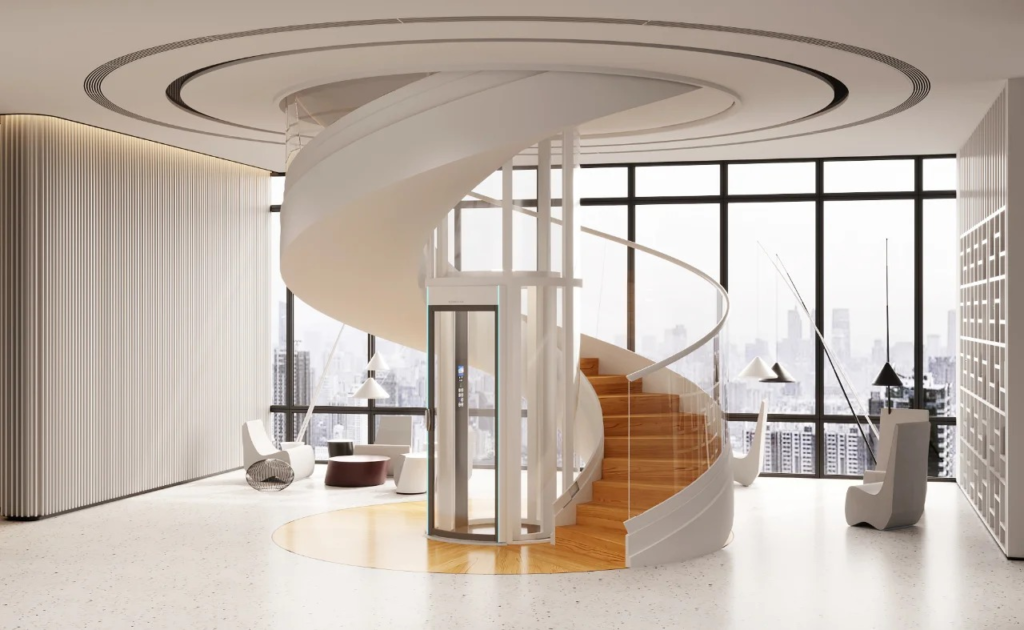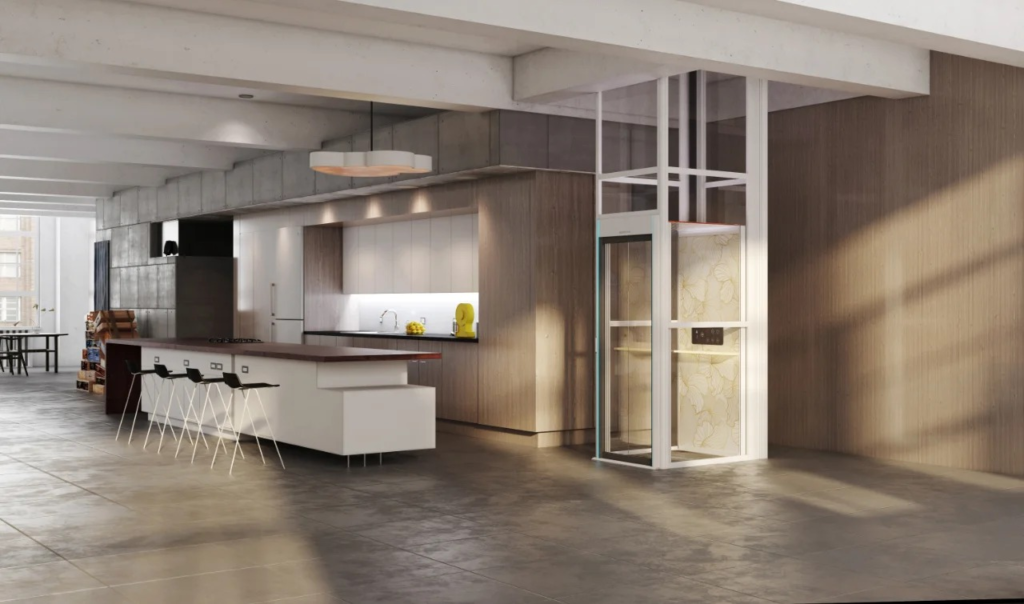The elevator for home, as a symbol of modern living and luxury, is gaining global popularity. From high-end villas in North America to compact apartments in Asia, its technological innovations and design philosophies are redefining residential experiences.

Technological Innovation: Drive Systems and Spatial Efficiency
The evolution of elevators for home lies in diversified drive systems and enhanced space utilization. For instance, Garaventa Lift’s hydraulic-driven elevators in the U.S. are renowned for low noise and adaptability, requiring minimal structural modifications1. Meanwhile, Sweden’s Cibes Symmetry offers the shaftless “Ascenda” model, which reduces installation time to 2-3 days and occupies only one-third of traditional elevator space, ideal for small homes.
Chinese manufacturers like GreatWall and Trumpf integrate AC variable frequency control to cut energy consumption by 30%, paired with titanium alloy finishes for durability. Smart sensors further enhance safety through real-time fault detection.
Design Trends: Customization and Aesthetic Integration
Modern elevators for home transcend functionality to become architectural highlights. Abbey Home Elevators allows customization with glass cabins, wood veneers, or engraved doors, seamlessly blending with interior styles. In Suzhou’s Xihe Hepingjiang residential project, private elevators feature dedicated entryways, enhancing both privacy and spatial elegance.
Cibes Symmetry’s “Asterix” series adopts panoramic glass cabins, transforming vertical mobility into scenic experiences, particularly favored in waterfront villas.

Global Market Dynamics: Regional Preferences and Standardization
North America prioritizes accessibility, with 40% of Abbey’s sales from ADA-compliant wheelchair lifts. Europe focuses on energy efficiency; Cibes’ A++-certified elevators penetrate 15% of villas in Sweden and Germany.
Asia-Pacific shows dichotomy: Trumpf’s cost-effective models (around $12,000) dominate Southeast Asia, while Japan favors compact units (250kg capacity) for aging populations. Regional standards like ASME in the U.S. challenge Chinese exporters to adapt designs.
Sustainability and Intelligence: Dual Engines for the Future
Energy-saving and smart technologies drive competition. Trumpf’s “Green Series” cuts carbon emissions by 50% using renewable energy and LED lighting. Cibes integrates IoT, enabling users to schedule elevators via apps and sync with smart home systems (e.g., lighting activation upon arrival).
Future AI algorithms may optimize scheduling—predicting usage peaks in multi-story homes to allocate resources efficiently.

The elevator for home’s global expansion reflects not only technological diffusion but also a shift in lifestyles. From Scandinavian minimalism to Chinese smart manufacturing, its evolution shows how vertical mobility transcends utility to shape living cultures. The integration of sustainability and digital ecosystems will unlock unprecedented innovation in this field.





